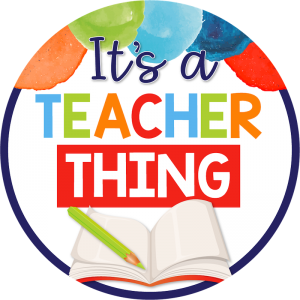Test prep games are an ideal way to review test practice material. Games engage students far more than worksheets, and there’s effective learning that happens during these fun review activities. Learn some of the best low stress test prep review games to add to your test prep activities.

Engaging Test Prep Games
4 Corners
This is one of the most fun test prep games. It’s versatile and a great way to get students up and moving. There are so many options for how to play the game. You can put the letters A, B, C, & D up in the corners and then project a question with 4 answer options (A, B, C, & D). Students rush to the corner that they believe is the correct letter to answer the questions.
Read this blog post to learn 5 effective test prep strategies for effective test prep review!
Another option is to put 4 answer options up in the corners. For example, you could put a semicolon, a color, a comma, and an ellipses in the corners. Then either read or project a sentence needing one of these.
The same could go for fraction equivalents, types of sentences, purposes for writing, etc.
Check out these fun ELA test prep vocabulary activities that you can use all year long!
One Word Hot Seat
One student sits in the hot seat with their back to the board, facing the class. Behind the student and above their head, one word is written on the board. The class gives the person in the hot seat one-word clues. For example, let’s say the word on the board is King Tut. The audience can give clues like “pharaoh” and “boy.” Once the students guesses, another person takes the “hot seat.”
Knockout Races Can Add Even More Fun to Test Prep Games
Divide students into teams. These can be 2, 4, or more teams. Line students up in rows, one student behind the other, facing the board, having a distinct spot for each team.
Pose a question or problem for the first students in each line. On “Go!” each person writes or yells out the answer. When time is up, or when you end the round, the students with the correct answers earn a point for the team. The next student in line then becomes the answerer.
You can also run this game where the correct and fastest answer stays in the game by going to the end of the team line. The person who was slowest or incorrect sits out and cheers on the players. You can also have options for passes back into the game…perhaps there is a card hidden in the question deck and when drawn, all knocked-out players return back to the game.
There are many ways to play this game. One of my favorites is to pose the question, give the team a set amount of time to work together, then the first student in line comes to the board to write the answer. If you’re doing something quick, like math facts, the team factor isn’t necessary.
Cups
Have task cards or questions that need answering ready to go. You’ll need three cups and either 3 different colors of markers. Square pieces of construction paper can work or use separate types of counters, like math tiles.
Write point values on the bottom of the cups. Two cups will have positive point values (like +4 or +2) and one will have a negative value (like -1 or -2).
The class gets split into three teams. You can have more teams if you have more sets of point counters. Teams work to answer questions. Once they complete a question, they must get it checked. If it’s correct, they can put one of the markers into any of the cups.
When time is up, tally up the colored markers in each cup and assign those points. Remember, one cup is negative points, which get deducted from the team total. The team with the most points wins.
Dry Erase Boards
I love using dry erase boards. They’re easy, a bit more anonymous for those shy students, and quick! Other than passing out materials, there’s no prep required. I provide a marker and something to erase. If you don’t have enough dry erase boards to go around, use a blank piece of white paper inside a plastic protective sleeve. These are easy to write on and erase.
Ask or project a question and have students write the answer. To avoid students holding up their boards before others are done, I always say, “1, 2, 3…show me!” Students are not allowed to hold up their boards before I say this prompt. Don’t forget to explain the correct answer.
Dry erase boards can also be used in groups or teams. I like to have students rotate the role of scribe so all players are actively involved.
Jeopardy Test Prep Game
This is easy to set up, and you create the questions you want as your focus. Either draw a Jeopardy board on your whiteboard or create a one for projecting, where you can cross off the questions that have been answered correctly.
Number your questions with a letter and a point value, depending on the difficulty. I like to have columns A-F and rows 5-25, so that’s 30 questions. Group students so you have 5 or 6 groups. Let them know that if a question is answered incorrectly, it remains in play, but the team that wants it must know it’s letter and value (like B-25) in order to pick it.
Make sure all groups have had an equal number of turns. The group with the highest points wins.
Save this blog post to a relevant Pinterest board.

I’m linking up with some great bloggers so you can find even more tips for teachers.


What fun ideas! I can’t wait to try some of them when we review concepts. Thanks, Marcy!
Thanks, Kathie.